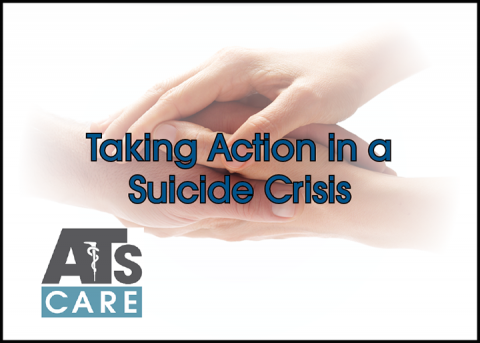
By Lovie Tabron MS, LAT, ATC, CISM, ATs Care Commission Chair
Athletic trainers impact health care through action before, during and after an injury. What about when the action needed is a silent yet present response? ATs must take action to prevent suicide.
According to the World Health Organization, close to 800,000 people die by suicide every year. As the second leading cause of death among 15 to 29 year olds, there is a growing need for advocacy.
September is National Suicide Prevention Month, and Sept. 10 is observed as World Suicide Prevention Day. The National Suicide Prevention Lifeline launched the #BeThe1To campaign during National Suicide Prevention Month as a call to action to promote healing, help and provide hope. The campaign promotes five action steps on how to help someone who may be suicidal: ask, be there, keep them safe, help them connect and follow up.
ATs Care is available as peer support for athletic trainers to lean on and talk about things that may be difficult for people who are not ATs to understand. More importantly, with the difficult conversations, ATs Care is accepting of those uncomfortable conversations because they know it will lead to betterment.
The ATs Care program trains members in crisis management for athletic trainers dealing with the aftermath of a critical incident. The mission of the ATs Care is to aid ATs and AT students who have been through a critical incident by utilizing a peer-to-peer system to assist, monitor and encourage those individuals to seek initial support through state or regional ATs Care teams.
Athletic trainers are a constant in many athletes’ lives when other people and positions may change often. This leads to a strong bond between the AT and the patient/athlete that should not be taken lightly. As an often designated confidant, it is the role of ATs to build relationships with mental health clinicians and refer athletes as needed.
Given the extreme demands of our current climate, Mental Health America’s screening has seen a drastic spike in suicidal and/or self-harm thinking.
To help in preventing suicide, ATs can follow six steps.
- Know the signs:
- Talking directly or indirectly about wanting to die or wanting to kill themselves
- Conversations about feeling empty, hopeless or having no reason to live
- Creating a plan
- Gathering items to implement the plan
- Withdrawing
- Substance abuse/misuse
- Ask:
- “Are you having thoughts of harming yourself?”
- “Do you intend to harm yourself?
- “What is your plan to harm yourself?”
- “Do you have access to things to harm yourself?”
- Keep them safe:
- Ensure the situation is safe for you as well
- Minimize access to harmful items or places, such as any firearms, alcohol, drugs and sharp objects
- Talk or sit with them until help arrives
- Be there:
- Don’t leave them alone
- Listen intently and empathetically
- Find out what they believe would be an effective source of help
- Increase their connectedness and limit their isolation
- Help them connect:
- Provide the National Suicide Prevention Lifeline: 1-800-272-8255
- Make relationships with local mental health clinicians
- Identify local hospitals that can assist with these crisis
- Follow up:
- Stay in touch after a crisis
- Reach out to ATs Care so they can be connected to a peer
NATA offers a variety of mental health resources for ATs to use. With quick acronyms and digestible phrases to remember, the NATA suicide awareness infographic handout outlines the signs and risk factors of suicide and what an AT can do if their patient is exhibiting suicidal thoughts. Additionally, the NATA mental health crisis card follows a stoplight-inspired approach to dealing with mental health crises. Lastly, the NATA mental health infographic handout on athlete burnout touches on the signs and symptoms an athlete might portray as well as the next steps.
For continued learning and resources on mental health, visit the mental health webpage on the NATA website.
References:
https://www.who.int/mental_health/prevention/suicide/suicideprevent/en/
https://www.who.int/docs/default-source/mental-health/suicide-prevention-teachers.pdf
https://www.mhanational.org/suicide-prevention
https://www.nimh.nih.gov/health/topics/suicide-prevention/index.shtml





